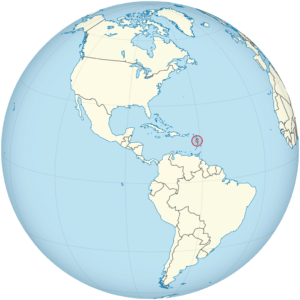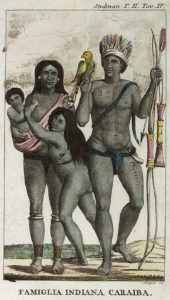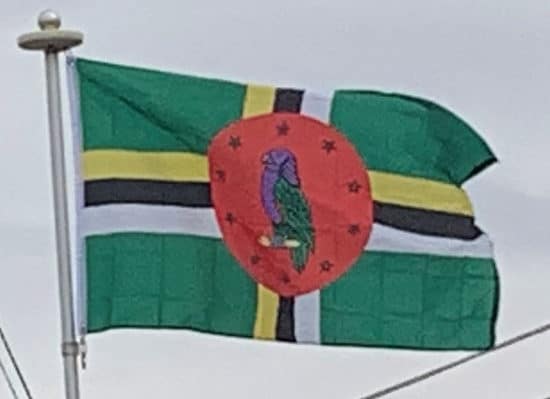Introduction:
Dominica, officially the Commonwealth of Dominica, is an island country in the Caribbean. The capital, Roseau, is located on the western side of the island. It is geographically situated a part of the Leeward Islands chain in the Lesser Antilles archipelago in the Caribbean Sea. The island is located near Guadeloupe to the northwest and Martinique to the south-southeast. Its area is 750 km2 (290 sq mi), and the highest point is Morne Diablotins, at 1,447 m (4,747 ft) in elevation. The population was 71,293 at the 2011 census.

The island was settled by the Arawak arriving from South America in the 5th century. The Island Caribs or Kalinagos displaced the Arawak violently by the 15th century. Columbus is said to have passed the island on Sunday 3 November 1493. It was later colonized by Europeans, predominantly by the French from the 1690s to 1763. The French imported enslaved people from West Africa to Dominica to work on coffee plantations. Great Britain took possession in 1763 after the Seven Years’ War, and it gradually established English as its official language. The island republic gained independence in 1978.
Its name is pronounced with emphasis on the third syllable, related to its French name of Dominique. Dominica has been nicknamed the “Nature Isle of the Caribbean” for its natural environment. It is the youngest island in the Lesser Antilles, and in fact it is still being formed by geothermal-volcanic activity, as evidenced by the world’s second-largest hot spring, called Boiling Lake. The island has lush mountainous rainforests, and it is the home of many rare plants, animals, and bird species. There are xeric areas in some of the western coastal regions, but heavy rainfall occurs inland. The sisserou parrot, also known as the imperial amazon and found only on Dominica, is the island’s national bird and featured on the national flag, which is one of only two national flags containing the color purple (the other being Nicaragua).
History:
Pre-Colonial Period and Early European Contact:
Dominica’s precolonial indigenous inhabitants were the Island Carib people, who are thought to have driven out the previous Arawak population. The Caribs called the island Wai‘tu kubuli, which means “Tall is her body.”

Christopher Columbus, sailing for Spain, named the island as Dominica, after the Latin term dies Dominica for Sunday, the day on which the Spanish first saw it in November 1493. Some Spanish colonizers settled here. But, as European explorers and settlers entered the region, indigenous refugees from surrounding islands settled Dominica and pushed out the Spanish settlers. They went to other areas that were easier to control and had more natural resources.
French Colony:
Spain had little success in colonising Dominica. In 1632, the French Compagnie des Îles de l’Amérique claimed it and other “Petites Antilles” for France, but no physical occupation took place. Between 1642 and 1650, French missionary Raymond Breton became the first regular European visitor to the island.
